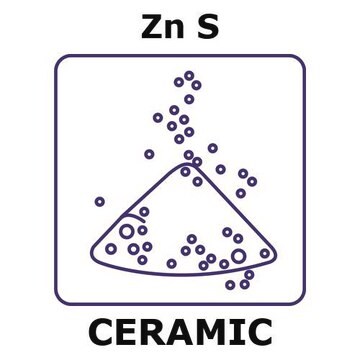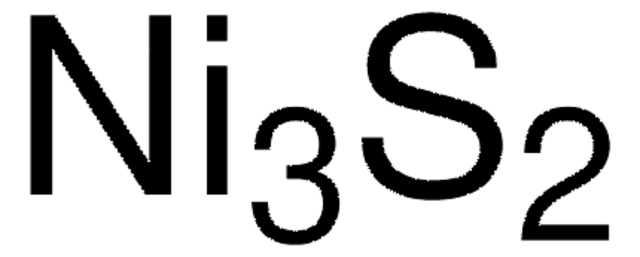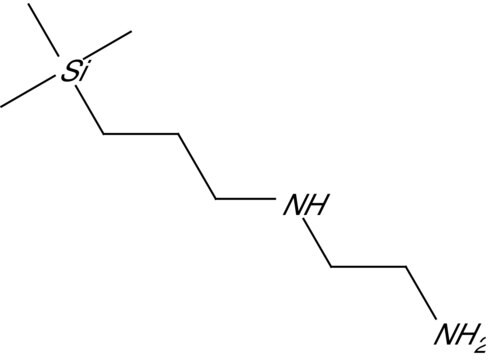Kluczowe dokumenty
14459
Zinc sulfide
purum, 97% (from Zn)
Synonim(y):
Siarczek cynku(II)
About This Item
Polecane produkty
klasa czystości
purum
Poziom jakości
Próba
97% (from Zn)
przydatność reakcji
core: zinc
reagent type: catalyst
strata
≤0.5% loss on drying, 105 °C
kolor
white to faint yellow
gęstość
4.1 g/mL at 25 °C (lit.)
ślady kationów
Ba: ≤1.5%
Ca: ≤200 mg/kg
Co: ≤500 mg/kg
Fe: ≤100 mg/kg
Mg: ≤500 mg/kg
ciąg SMILES
S=[Zn]
InChI
1S/S.Zn
Klucz InChI
WGPCGCOKHWGKJJ-UHFFFAOYSA-N
Szukasz podobnych produktów? Odwiedź Przewodnik dotyczący porównywania produktów
Zastosowanie
- Preparation of flexible transparent conductive coatings essential for fabrication of a variety of printed electronic devices such as flexible displays and solar cells
- Prepare a composite CdS-ZnS/Zirconium-titanium phosphate (ZTP) photocatalyst for hydrogen production under visible light
- Prepare light-controlled bioelectrochemical sensors based on CdSe/ZnS quantum dots
- Catalyst for photocatalytic degradation of organic pollutants
- Preparation of color tunable light-emitting diodes (LEDs)
- Prepare (CdS-ZnS)-TiO2 combined photocatalysts for electricity production via photoelectrocatalysis
- Catalyst for synthesis of spirooxindole derivatives in aqueous medium via Knoevenagel condensation followed by Michael addition
- Prepare CdSe/ZnS q uantum dots for chemiluminescent and chemiluminescence resonance energy transfer (CRET) detection of DNA, metal ions, and aptamer-substrate complexes
- Preparation of ZnS nanocrystals for ultrasensitive protein detection in terms of multiphonon resonance Raman scattering
Kod klasy składowania
13 - Non Combustible Solids
Klasa zagrożenia wodnego (WGK)
nwg
Temperatura zapłonu (°F)
Not applicable
Temperatura zapłonu (°C)
Not applicable
Środki ochrony indywidualnej
Eyeshields, Gloves, type N95 (US)
Wybierz jedną z najnowszych wersji:
Masz już ten produkt?
Dokumenty związane z niedawno zakupionymi produktami zostały zamieszczone w Bibliotece dokumentów.
Klienci oglądali również te produkty
Nasz zespół naukowców ma doświadczenie we wszystkich obszarach badań, w tym w naukach przyrodniczych, materiałoznawstwie, syntezie chemicznej, chromatografii, analityce i wielu innych dziedzinach.
Skontaktuj się z zespołem ds. pomocy technicznej








